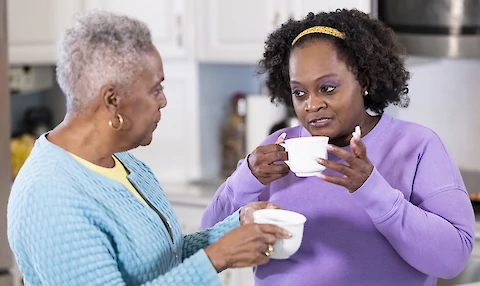
As a caregiver, your ability to provide quality care to those who depend on you starts with your health. Factors like Seasonal Affective Disorder (SAD) can significantly impact your well-being, making your caregiving responsibilities more challenging. SAD, characterized by depressive episodes that occur at a particular time of the year, can affect your energy, mood, and ability to function well. This article serves as a guide for caregivers dealing with SAD. We discuss how to recognize, address, and manage this condition while continuing to provide quality care. We explore how sharing responsibilities with other local relatives or hiring a professional service can aid in prioritizing self-care.
Recognizing Seasonal Affective Disorder (SAD)
Seasonal Affective Disorder (SAD)is a type of depression that's directly related to changes in seasons. It typically begins and ends at the same time every year. If you're like many people with SAD, your symptoms start in the fall and continue into the winter months, sapping your energy and making you feel moody. Symptoms might include:
- Feeling depressed nearly every day.
- Losing interest in activities you once enjoyed.
- Difficulty concentrating
Recognizing these symptoms and their impact on your caregiving responsibilities is essential. If you notice a consistent pattern of depressive symptoms during certain months of the year, make sure to seek professional help,
Addressing Seasonal Affective Disorder (SAD)
Once you've recognized the symptoms, the next step involves addressing them. Dealing with symptoms often requires professional help, such as seeking a therapist or a psychiatrist. Different treatment options for SAD include light therapy, medications, and cognitive-behavioral therapy, and it's important to discuss these with a health professional to find the best fit. It's also crucial to communicate about your condition with those you provide care for, as this can help them understand your situation and create a supportive environment.
Maintaining Caregiving Responsibilities
Managing SAD and caregiving responsibilities can feel like a balancing act, but with the right tools, it's doable. Self-care is not a luxury but a necessity. Practicing self-care could mean setting aside time daily for activities that bring you joy and relaxation, eating a balanced diet, exercising regularly, and ensuring you get enough sleep. Implementing SAD treatment strategies into your routine is equally important. Whether this means setting up a lightbox in your living area or taking prescribed medication, you should always consider your mental health care as critical as your caregiver's responsibilities.
Sharing the Role of Caregiver
While it's crucial to manage SAD and maintain your caregiving role, remember that you shouldn't take on the endeavor of caring for a loved one alone. There is tremendous value in sharing caregiving responsibilities. Discuss sharing caregiving tasks with other local family members whenever possible to give you time to focus on your health.
Professional caregiving services represent an excellent solution for those needing others to share the responsibility. Hiring a professional caregiver doesn't mean you're neglecting your loved one. On the contrary, you ensure they receive top-quality care while prioritizing your well-being.
We Want to Help
Recognizing, addressing, and managing Seasonal Affective Disorder while fulfilling caregiving responsibilities represents a challenge. However, it is possible with the right strategies, help, and resources. Remember, to care for others efficiently, you must first care for yourself.
If you reside in Victoria, Hallettsville, Cuero, Brenham, or San Marcos and need assistance sharing caregiving responsibilities, don't hesitate to contact usat Senior Helpers Victoria. We are devoted to helping you ensure your loved ones are well-cared for while you also take the necessary steps to prioritize your wellness. We would love to discuss our servicesfor seniors and their caregivers, such as Personal Care and Respite Care.